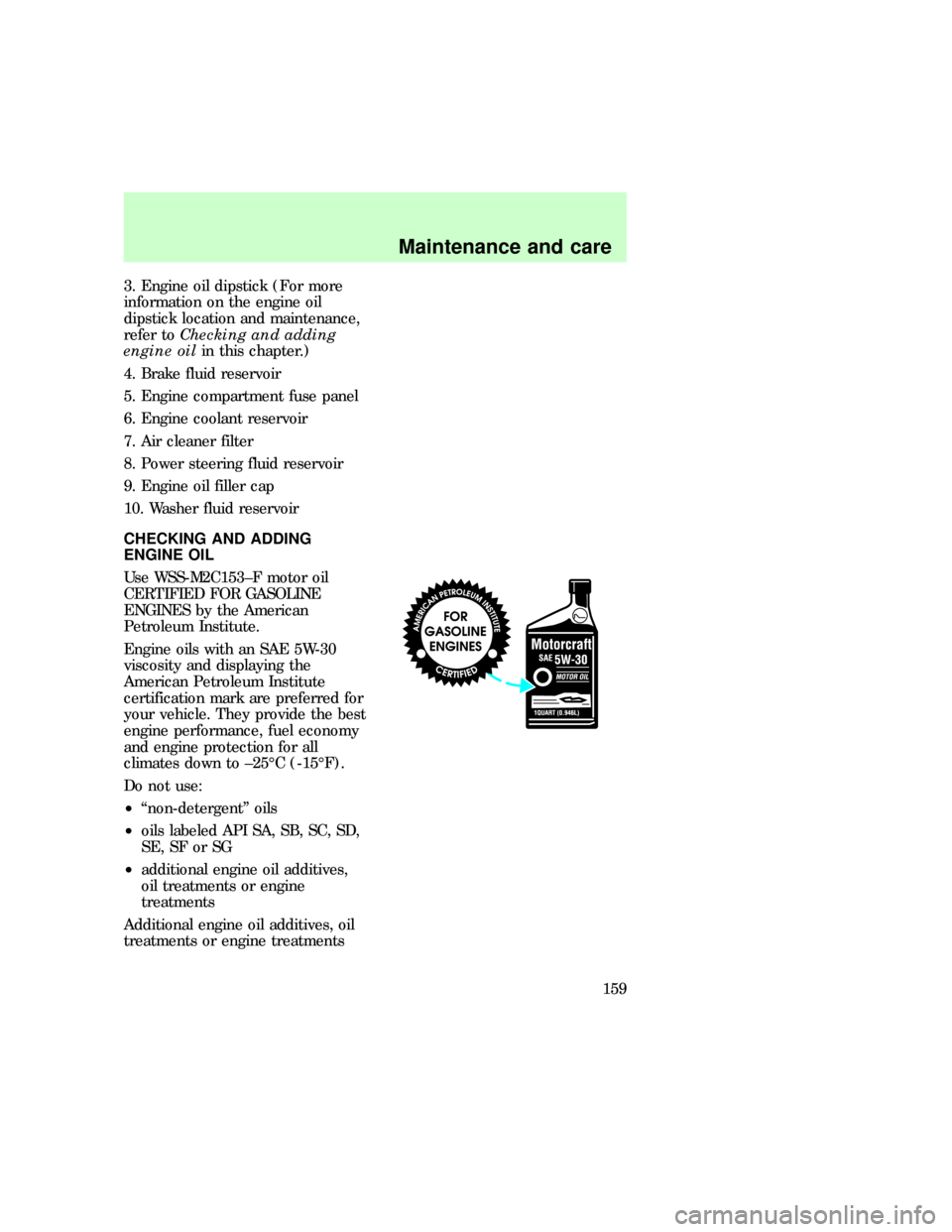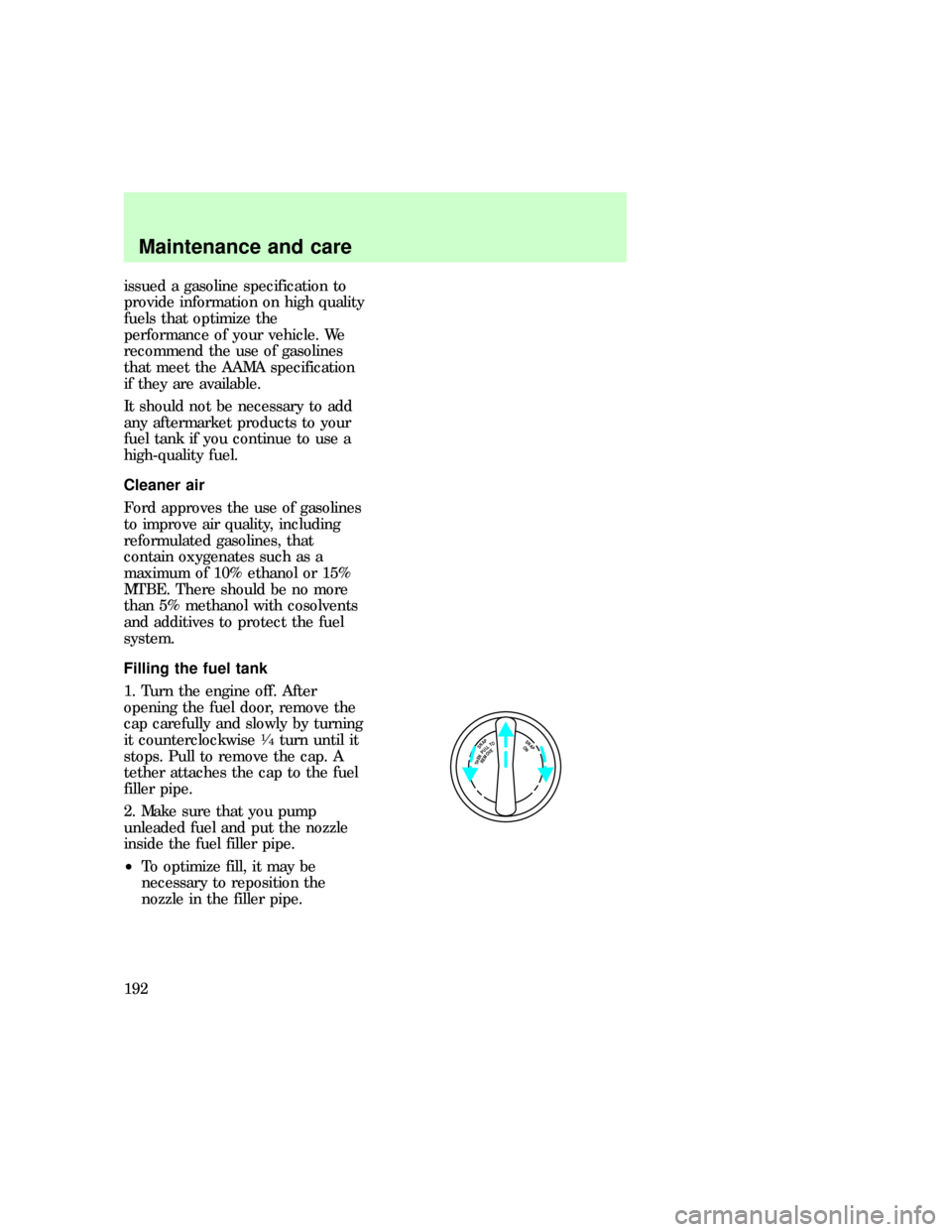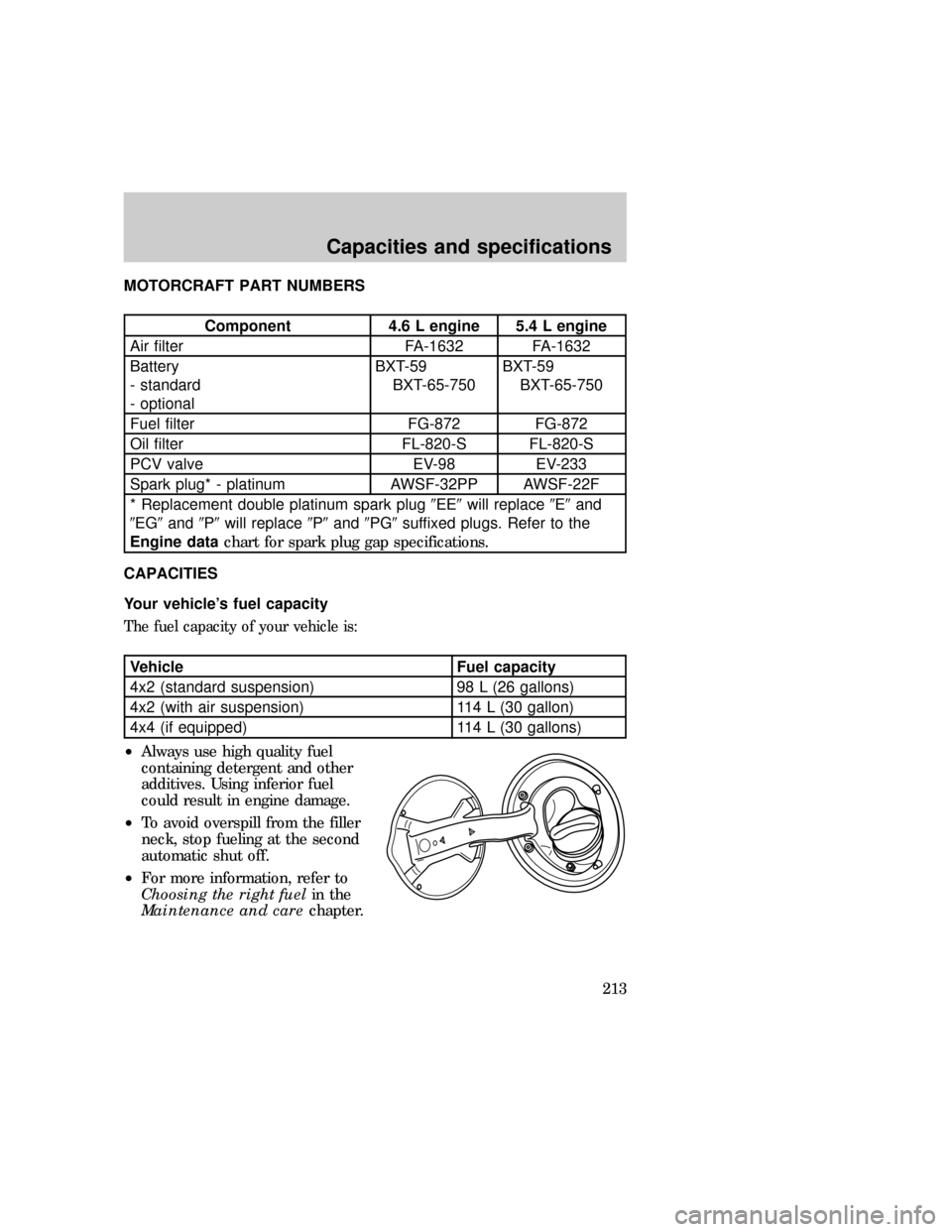Page 14 of 224
Tachometer
Indicates the engine speed in
revolutions per minute.
Engine coolant temperature
gauge
Indicates the temperature of the
engine coolant. At normal
operating temperature, the needle
remains within the normal zone. If
it enters the red section, the
engine is overheating. Switch off
the engine and allow it to cool.
Refer toChecking and adding
engine coolantandWhat you
should know about fail-safe
coolingin theMaintenance and
carechapter.
Fuel gauge
For information on the capacity of
the fuel tank, refer to the
Capacities and specifications
chapter.
The fuel gauge displays
approximately how much fuel is in
the fuel tank only when the
ignition is ON. For proper fuel
gauge indication after adding fuel,
turn the ignition switch OFF while
refueling the vehicle.
0RPMx1000
3
2
4
5
6 1
LHLH
EF
exd_engine_coolant
exd_fuel_gauge
Instrumentation
15
Page 132 of 224
Servicing while towing
If you tow a trailer for long
distances, your vehicle requires
more frequent service than a
vehicle not used for towing. Refer
to the ªService GuideºSevere
Duty Schedulefor more
information on maintenance
intervals.
Using a step bumper
The rear bumper is equipped with
an intregal hitch and requires only
a ball with a 1 inch shank
diameter. The bumper has a 1814
kg (4000 lb) trailer weight and 181
kg (400 lb) tongue weight
capability.
Use a frame mounted weight
distributing hitch for trailers over
1814 kg (4000 lb).
FUEL CONSUMPTION
Fuel economy can be improved by
avoiding:
²lack of regular, scheduled
maintenance
²excessive speed
²rapid acceleration
exd_step_bumper
com_fuel_consumption.01
Driving
133
Page 158 of 224

3. Engine oil dipstick (For more
information on the engine oil
dipstick location and maintenance,
refer toChecking and adding
engine oilin this chapter.)
4. Brake fluid reservoir
5. Engine compartment fuse panel
6. Engine coolant reservoir
7. Air cleaner filter
8. Power steering fluid reservoir
9. Engine oil filler cap
10. Washer fluid reservoir
CHECKING AND ADDING
ENGINE OIL
Use WSS-M2C153±F motor oil
CERTIFIED FOR GASOLINE
ENGINES by the American
Petroleum Institute.
Engine oils with an SAE 5W-30
viscosity and displaying the
American Petroleum Institute
certification mark are preferred for
your vehicle. They provide the best
engine performance, fuel economy
and engine protection for all
climates down to ±25ÉC (-15ÉF).
Do not use:
²ªnon-detergentº oils
²oils labeled API SA, SB, SC, SD,
SE, SF or SG
²additional engine oil additives,
oil treatments or engine
treatments
Additional engine oil additives, oil
treatments or engine treatments
com_check-add_oil.01
Maintenance and care
159
Page 188 of 224
Important safety precautions
Do not overfill the fuel
tank. The pressure in an
overfilled tank may cause
leakage and lead to fuel spray
and fire.
If you do not use the
proper fuel cap, the
pressure in the fuel tank can
damage the fuel system or cause
it to work improperly in a
collision.
The fuel system may be
under pressure. If the fuel
cap is venting vapor or if you
hear a hissing sound, wait until it
stops before completely
removing the cap.
Automotive fuels can
cause serious injury or
death if misused or mishandled.
Observe the following guidelines
when handling automotive fuel:
²Extinguish all smoking materials
and any open flames before
fueling your vehicle.
²Always turn off the vehicle
before fueling.
²Automotive fuels can be harmful
or fatal if swallowed. If fuel is
swallowed, call a physician
immediately, even if no
symptoms are immediately
Maintenance and care
189
Page 191 of 224

issued a gasoline specification to
provide information on high quality
fuels that optimize the
performance of your vehicle. We
recommend the use of gasolines
that meet the AAMA specification
if they are available.
It should not be necessary to add
any aftermarket products to your
fuel tank if you continue to use a
high-quality fuel.
Cleaner air
Ford approves the use of gasolines
to improve air quality, including
reformulated gasolines, that
contain oxygenates such as a
maximum of 10% ethanol or 15%
MTBE. There should be no more
than 5% methanol with cosolvents
and additives to protect the fuel
system.
Filling the fuel tank
1. Turn the engine off. After
opening the fuel door, remove the
cap carefully and slowly by turning
it counterclockwise
1¤4turn until it
stops. Pull to remove the cap. A
tether attaches the cap to the fuel
filler pipe.
2. Make sure that you pump
unleaded fuel and put the nozzle
inside the fuel filler pipe.
²To optimize fill, it may be
necessary to reposition the
nozzle in the filler pipe.SNAP
THENPULLTO
REMOVESNAPON
com_cleaner_air.01
exd_fuel_cap
Maintenance and care
192
Page 192 of 224
![FORD EXPEDITION 1997 1.G Owners Manual ²The help reduce early nozzle
shut offs and fuel spillage, park
your vehicle so that the fuel
filler door is level.
²Avoid excessively fast fuel
dispensing rates (over 38 L [10
gallons] per minute). FORD EXPEDITION 1997 1.G Owners Manual ²The help reduce early nozzle
shut offs and fuel spillage, park
your vehicle so that the fuel
filler door is level.
²Avoid excessively fast fuel
dispensing rates (over 38 L [10
gallons] per minute).](/manual-img/11/4905/w960_4905-191.png)
²The help reduce early nozzle
shut offs and fuel spillage, park
your vehicle so that the fuel
filler door is level.
²Avoid excessively fast fuel
dispensing rates (over 38 L [10
gallons] per minute).
²If you spill any fuel on the body
of your vehicle, clean it off
immediately. The fuel may dull
or soften the paint if it is not
washed off promptly.
3. To replace the fuel cap, align
the tabs on the cap with the
notches on the filler pipe. Turn it
clockwise until it stops.
4. Push the fuel door closed.
If the check engine warning light
illuminates and remains illuminated
while the engine is started, the
fuel cap may not be properly
seated. Turn off the engine,
remove the fuel cap and replace it.
being sure to align the cap
properly.
If the fuel cap is lost, replace it
with an authorized Motorcraft or
equivalent part.
Calculating fuel economy
To accurately calculate your
vehicle's fuel economy:
1. Fill the tank completely and
record the initial odometer
reading.
2. Each time you fill the tank,
record the amount of fuel added
(in liters or gallons).
com_calculating_economy.01
Maintenance and care
193
Page 212 of 224

MOTORCRAFT PART NUMBERS
Component 4.6 L engine 5.4 L engine
Air filter FA-1632 FA-1632
Battery
- standard
- optionalBXT-59
BXT-65-750BXT-59
BXT-65-750
Fuel filter FG-872 FG-872
Oil filter FL-820-S FL-820-S
PCV valve EV-98 EV-233
Spark plug* - platinum AWSF-32PP AWSF-22F
* Replacement double platinum spark plug9EE9will replace9E9and
9EG9and9P9will replace9P9and9PG9suffixed plugs. Refer to the
Engine datachart for spark plug gap specifications.
CAPACITIES
Your vehicle's fuel capacity
The fuel capacity of your vehicle is:
Vehicle Fuel capacity
4x2 (standard suspension) 98 L (26 gallons)
4x2 (with air suspension) 114 L (30 gallon)
4x4 (if equipped) 114 L (30 gallons)
²Always use high quality fuel
containing detergent and other
additives. Using inferior fuel
could result in engine damage.
²To avoid overspill from the filler
neck, stop fueling at the second
automatic shut off.
²For more information, refer to
Choosing the right fuelin the
Maintenance and carechapter.
exd_motorcraft_parts_numbers
exd_fuel_capacity
exd_refill_capacities
Capacities and specifications
213
Page 214 of 224
SPECIFICATIONS
Lubricant specifications
Item Ford part nameFord part
numberFord
specification
Windshield
washer fluid
reservoirFord Ultra-Clear
Windshield
Washer Fluid
ConcentrateC9AZ-19550-AA
OR -BAESR-M17P5-A
Body hinges,
latches, door
striker plates
and rotors, seat
tracks, fuel filler
door hinge and
spring, hood
latch, auxiliary
latchMulti-Purpose
GreaseD7AZ-19584-AA
OR
D0AZ-19584-AAESR-M1C159-A
AND
ESB-M1C93-B
Lock cylinders,
swing-away
spare tire carrier
padlockPenetrating
LubricantE8AZ-19A501-B ESB-M2C75-B
Parking brake
linkage pivots
and clevisesPremium Life
Long GreaseXG-1-C ESA-M1C75-B
Brake master
cylinderHigh
Performance
DOT 3 Brake
FluidC6AZ-19542-AA ESZ-M6C25-A
Brake pedal
pivot points and
clevisesEngine Oil
SAE-10W- WSS-M2C153-F
exd_lubricant_specifications
Capacities and specifications
215